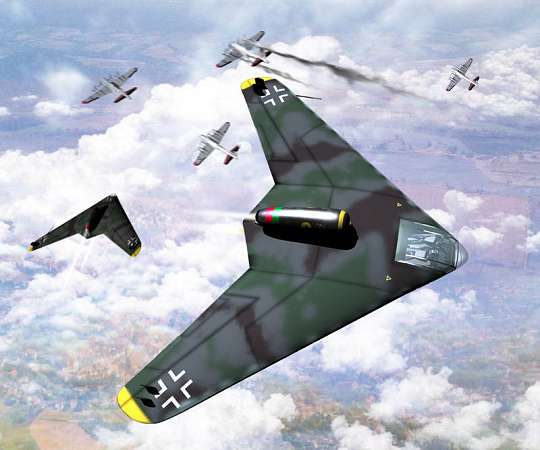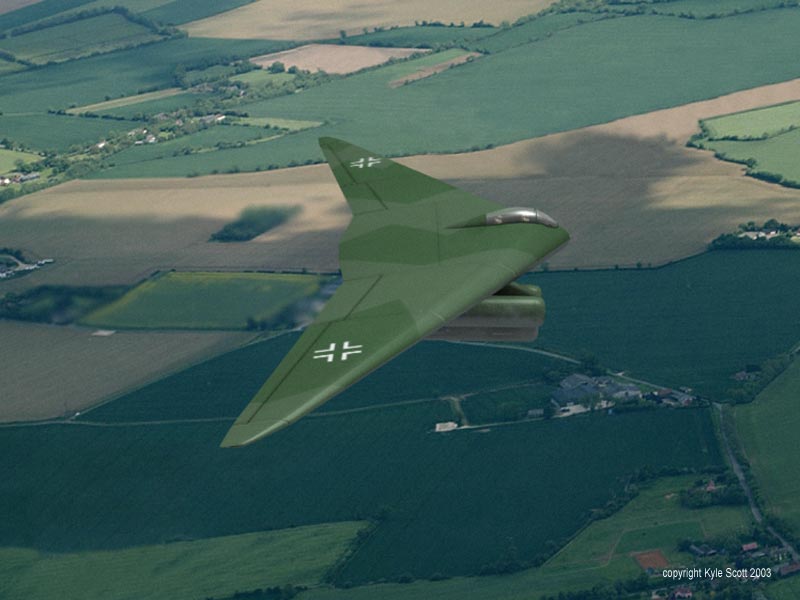Gotha 229 (Ho-IX)r
Specific Features: The Gotha Go-229, or Horten Ho-IX depending on which designers you think are more “totally rad”, is an interesting design from the late war crazy Luftwaffe department made more notable by its visually apparent relation to modern aircraft like the B-2 “Stealth” Bomber. The order was made in 1943 for a fast heavy-fighter bomber and Walter and Reimar Horten received approval from fat bastard Herman Goering for their tailless aircraft design. The aircraft mounted a Jumo turbojet inside each streamlined wing and carried an armament of four heavy 30mm cannons and two heavy bomb hard points. Speaking as a purely objective and scientific observer the aircraft was nothing short of screaming jet-powered sex. It was an unusual and almost organic-looking design that featured a number of unique components which would have probably made it difficult to maintain. The final production model was to have been a two-seat fighter with advanced (well, as advanced as those things got in that day and age) radar mounted in the elongated nose.
The last remaining Go-229 is kept disassembled in storage in Maryland.
History: Three prototypes of the Go-229 were constructed and two of these were tested and flown, making it one of the most practical aircraft I’ve covered in one of these pieces. The first prototype was built as a glider and flew in 1944 to test the airframe’s airworthiness and provide data for future modifications. The second prototype was constructed while the first was being tested and took to the skies in February of 1945 powered by a pair of stand-in BMW turbojet engines. Test pilot Erwin Ziller reported that the aircraft performed admirably on both this test and during a second test, although during the second the undercarriage was slightly damaged during landing. The third test saw a catastrophic engine failure and the death of the famed test pilot, but hey, you can’t always get things like that right!
Work on a third prototype continued despite this mishap. The Go-229 was larger than the two previous prototypes, mounted the Jumo turbojets, and was intended to serve as a model for the ordered pre-production run of 20 aircraft. Only a few weeks later in mid-April the facility where the Go-229 was to be produced was overrun by American forces. The completed third prototype and four other partially assembled early production models were captured. In over fifty years since this incredible and, dare I say, erotic aircraft first took to the skies only two production aircraft have directly benefited from the work of the Hortens on the Go-229 and similar designs. The first was the Concord aircraft, which utilized much of the Hortens’ research but very little of the actual design. No, the true spiritual successor of the Go-229 is America’s B-2 Stealth Bomber. In those 50 years of development and technological achievement we somehow went from a sleek, fast, and maneuverable fighter to a lumbering and slow bomber that requires a fucking super computer to keep it from crashing into a ditch and looks about as sexy in the sky as a drowned bat covered in superglue.







